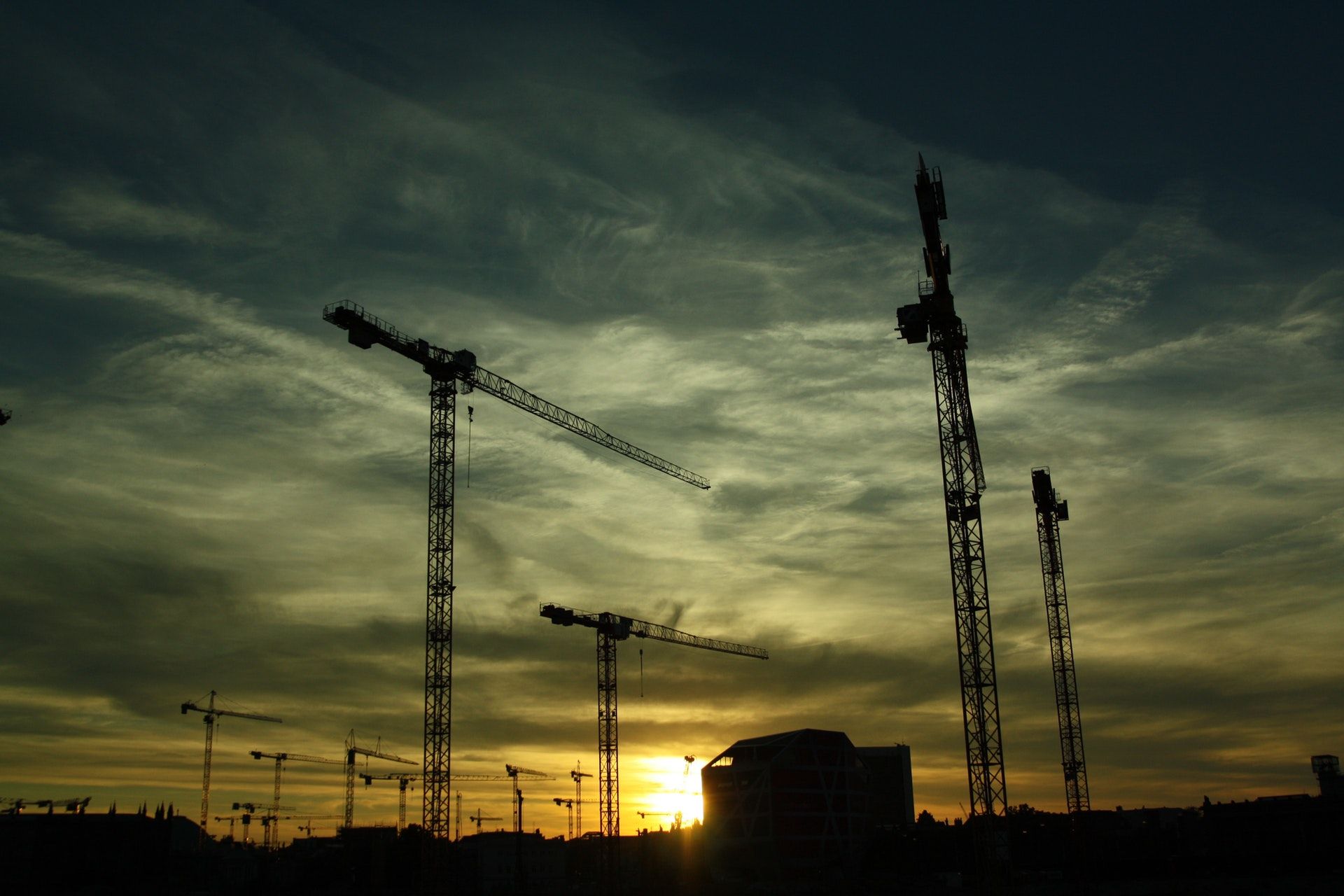The verdict of the Council of State on the nitrogen issue may be disastrous for the road and house construction industry. Do TU Delft researchers see any way out?
Is the nitrogen verdict going to stop constructions? (Foto: pexels).
Just before summer, the Council of State, the highest court in the country, blocked the construction of a ring road around Utrecht because both building it and using it would emit too much nitrogen. The construction industry feared further consequences and not without reason. In the meantime, it has transpired that this verdict will affect half the road construction up to 2024 and thousands of other construction projects. “This verdict puts even more pressure on the housing market in the short term and will cause even more congestion,” responded Professor of Housing Systems, Peter Boelhouwer (Faculty of Architecture and the Built Environment).
Microbiologist Dr Henk Jonkers, material researcher at the Faculty of Civil Engineering and Geosciences, believes that the housing construction industry should take a different approach. “We need to adopt a more integrated approach to building houses and air quality if we want climate-resilient cities.”
The trap
The economy of the Netherlands is doing well. But one effect of this is that it is becoming busier – there is more traffic and new housing needs to be built to cater to the population growth and labour migration. The Cabinet is striving for about 75,000 new homes a year, and one million by 2040.
At the same time, the cap for nitrogen emissions in Europe is gradually being lowered. In 2013, there was an annual cap of 128 kilo tons of ammonia (that was exceeded by 4%). In 2020, that cap will be lowered to 123 kilo tons.
The Government saw the nitrogen cap coming and thought up the Programma Aanpak Stikstof (PAS, lit. dealing with nitrogen programme). This Programme strives to do the opposite that its name suggests and will not deal with nitrogen emissions, but will tolerate them. Under PAS, permission could be given for more emissions if they will be compensated for by the expected positive reductions in the future.
On 29 May 2019, the Council of State ended the legal loophole on the grounds that construction activities may no longer be compensated for by future pledges. This caused the demise of the plans for building the A27/A12 around Utrecht and the A12/A15 around Arnhem. In total, the Council of State scrapped almost half the planned road projects for the next four years, calculated economists at the ABN Amro bank. This equates to a EUR 9 billion loss of turnover, on top of an estimated EUR 5 billion by the construction industry.
 The future is bleak for bio-industry, says D66. (Foto: Pxhere.com)
The future is bleak for bio-industry, says D66. (Foto: Pxhere.com)Cows and diesel cars
But what are these suffocating nitrogen emissions and where do they come from? Nitrogen gas (N2) is not the problem as most of the air (80%) is nitrogen gas. Hazardous nitrogen emissions, explains microbiologist Jonkers, are ammonia (NH4+) and nitrogen oxide (NO and NO2, together forming NOx). These substances are hazardous for human health and for the biodiversity in Natura-2000 nature areas. Natura 2000 is a European network of recognised nature reserves.
NOx comes primarily from diesel engines and is thus closely correlated to traffic and construction. There is twice as much ammonia emissions which come from agriculture. This is despite the sector significantly reducing ammonia emissions by 64% since 1990. The biggest problem in the Netherlands thus rests on the livestock industry.
Solutions
So what now? Professor of Housing Systems Peter Boelhouwer points out that, compared to traffic and livestock farming, housing contributes the least to nitrogen emissions. He believes that lowering the maximum speed of traffic or limiting the amount of livestock would create room for more houses. But this is a sore point for the governing parties, VVD and CDA.
“The Netherlands is nowhere near full. We just need to think bigger,” asserts Boelhouwer. “Sixty-five percent of our country is agricultural land, 20% nature and 10% housing,” he calculates. “Reduce the agricultural land to 55% and divide the freed up land between nature and housing. I see that this is already happening at a small scale where developers buy up agricultural land or greenhouse farms. It’s called Ruimte voor ruimte (space for space).”
Microbiologist Henk Jonkers views the Council of State’s verdict as an opportunity to deal with urbanisation better. “You can have nitrogen absorbed by plants,” says the materials researcher. “Swamp plants and reeds in particular absorb a lot of NOx.” He argues for combining housing and air quality to create climate resilient cities. No longer thinking in terms of either housing or nature, but integrating housing and green in one approach.
Cattle for houses
There is a growing awareness in the political landscape that space can be created for housing by reducing the amount of livestock. One of the ruling parties, D66, stated this week that it would like to see the amount of livestock halved. “The future is bleak for the bio-industry,” said Member of Parliament Tjeerd de Groot on the proposal. “The Netherlands is a postage stamp where too many chickens, pigs and goats are kept. The Government needs to take decisions. Young people want homes but are unable to find them. Construction may be stopped because of the nitrogen issue. This is even affecting the building of roads and public transport.”
Do you have a question or comment about this article?
j.w.wassink@tudelft.nl


Comments are closed.